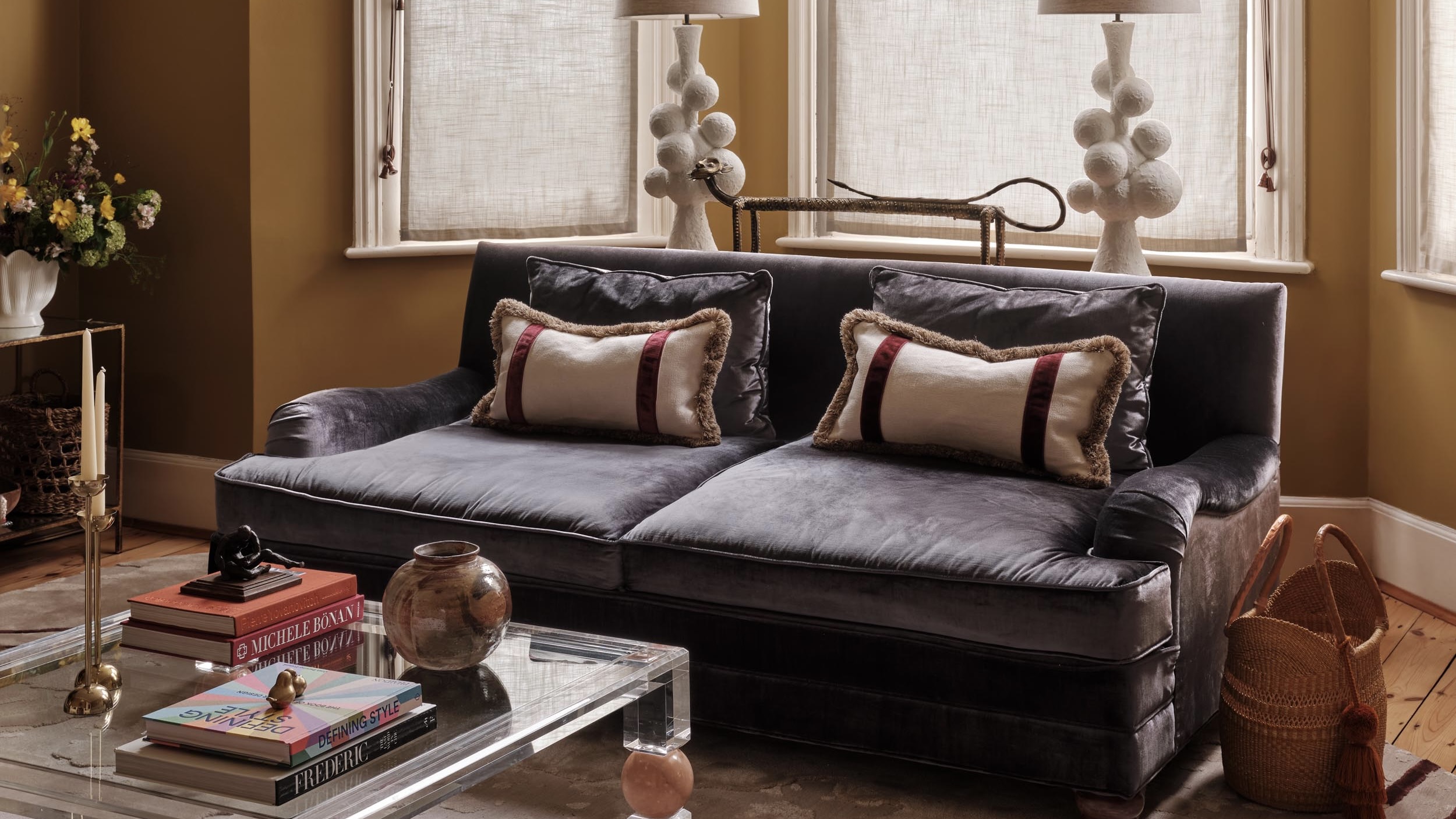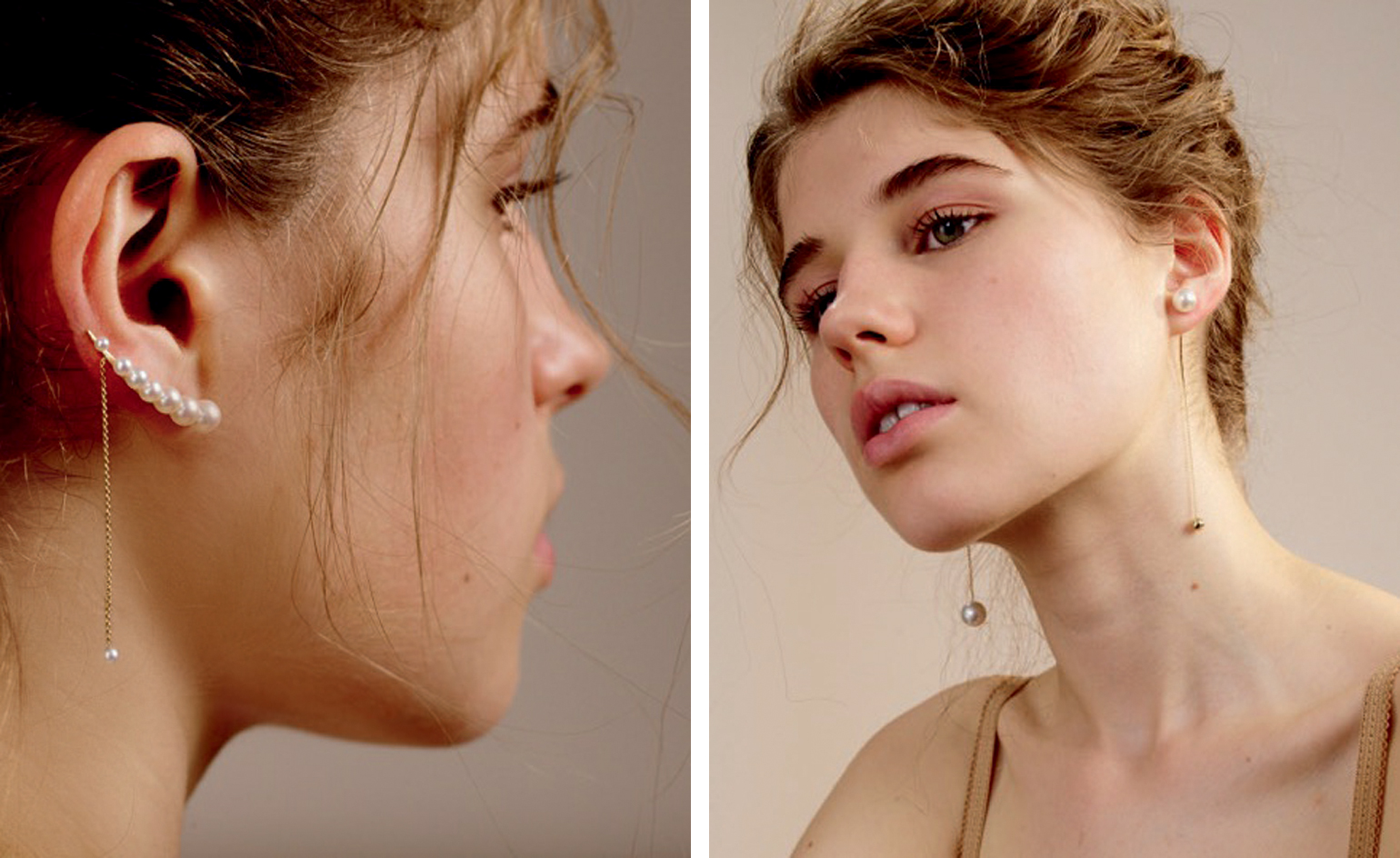Gem-studded geometry: jewellery brand Moltke comes to Dover Street Market
Moltke’s founder takes us inside its latest architecturally inspired jewellery collection, ‘Abacus’, crafted from recycled gold and lab-grown diamonds

For Nicholas Moltke, good design is synonymous with classical architecture, both characterised by nods to geometric forms and textural play. It is something that runs throughout Moltke’s eponymous jewellery brand, available exclusively at Dover Street Market, London.
The ‘Abacus’ collection, crafted in recycled gold and featuring lab-grown diamonds, is distinguished by two patented cuts. Rings, necklaces, bracelets and hoops juxtapose these distinctive stones with a hypnotic interplay of gold and diamonds. Here, Moltke takes us inside his young brand.
Inside jewellery brand Moltke

Women's ‘Abacus’ eternity band in yellow gold with lab-grown diamonds, £4,875, by Moltke, from doverstreetmarket.com
Wallpaper*: Can you tell us a bit about the philosophy of the brand? How is it shaped around your interest in design and architecture?
Nicholas Moltke: The Moltke philosophy is rooted in a desire to merge contemporary art, stone masonry and classical architecture design principles with diamond and jewellery design. In doing so, a new language and visual universe emerges. For me, it’s about pursuing a sense of truth. The additional dimension of my philosophy is craftsmanship and excellence, developing unique diamond cuts and crafting a new jewellery language takes decades-long experience and skill. When I was in my late teens I was focused on becoming an architect, my fascination with form and creation was only second to my obsession for gemstones and diamonds. In the end, I chose to submerge myself in the world of diamonds. Yet, it was my interest in the principles laid out by Vitruvius (80–70 BC) that now, three decades later, I have fused with diamond design.
W*: Graphic design codes imbue these precious materials with a modernity. How would you characterise your aesthetic?
NM: My aesthetic is primarily contemporary minimalism mixed with a generous amount of sensuality. Geometric shapes are an important source of truth for me; they have their own universal language and were used in stone masonry. These principles have, however, never been applied to diamond design, as there has been a mild obsession with designing and cutting diamonds that prioritise brilliance. This is why you will see geometric shapes having a central position in my visual universe, which also takes cues from contemporary art. I grew up in Copenhagen, and Danish design, which epitomises a blend of beauty, utility, timelessness, simplicity, and enduring quality, has played an important role in shaping my aesthetic. Travelling the world and living in the UK (London), Botswana (Gaborone) and Belgium (Antwerp) has also influenced my aesthetic into something more global. My passion for precious materials, sustainability, quality, utility, form and craftsmanship are all interconnected; but with Moltke I wanted to showcase these in a more sensual and global way.

W*: Why are you keen to work with lab-grown diamonds?
Receive our daily digest of inspiration, escapism and design stories from around the world direct to your inbox.
NM: It would be incredibly challenging to create my designs and diamond cuts using natural diamonds, firstly because it would be impossible to find enough of the right rough stones to cut these shapes from. Secondly, there would be too much waste when cutting natural rough diamonds. Across different creative fields, there is impetus to explore new materials, understand how they can be optimised and how they can be adopted to help reduce human footprint. Sustainability for me is not just about carbon footprint, that is too simplistic. It’s also about understanding utility and waste. Using lab-grown diamonds was the only viable option if I wanted to unlock the design vision I have created for Moltke. Rough lab-grown diamond crystals enable experimentation and innovation, as very large exceptional high-quality crystals can be grown, allowing for low waste and a zero footprint. Using lab-grown diamonds facilitates me to pursue truth in my designs in a way that natural diamonds do not.
W*: What are the main challenges you have encountered when creating your pieces?
NM: Creating a whole new design language is incredibly challenging. Developing the ‘Abacus Diamond’ took close to two years to perfect. I worked tirelessly with our master diamond cutter in our Antwerp atelier to develop this unique cut. Together we went through multiple stages of adjusting facet angles to develop optimal light performance and flash of light. In conjunction with the cut development, we ran a parallel process of experimentations with multiple techniques to hand-set the Abacus in 18ct gold. The precision and consistency needed by our diamond cutters to cut the Abacus is remarkable. From a design perspective, taking the principles of classical architecture and stone masonry and applying them to a miniature scale and diamonds is challenging, but beauty has emerged as a testament to taking a different approach while using century-old design and craftsmanship principles.
Hannah Silver is the Art, Culture, Watches & Jewellery Editor of Wallpaper*. Since joining in 2019, she has overseen offbeat art trends and conducted in-depth profiles, as well as writing and commissioning extensively across the worlds of culture and luxury. She enjoys travelling, visiting artists' studios and viewing exhibitions around the world, and has interviewed artists and designers including Maggi Hambling, William Kentridge, Jonathan Anderson, Chantal Joffe, Lubaina Himid, Tilda Swinton and Mickalene Thomas.
-
 Eight questions for Bianca Censori, as she unveils her debut performance
Eight questions for Bianca Censori, as she unveils her debut performanceBianca Censori has presented her first exhibition and performance, BIO POP, in Seoul, South Korea
-
 How to elevate a rental with minimal interventions? Charu Gandhi has nailed it with her London home
How to elevate a rental with minimal interventions? Charu Gandhi has nailed it with her London homeFocus on key spaces, work with inherited details, and go big on colour and texture, says Gandhi, an interior designer set on beautifying her tired rental
-
 These fashion books, all released in 2025, are the perfect gift for style fans
These fashion books, all released in 2025, are the perfect gift for style fansChosen by the Wallpaper* style editors to inspire, intrigue and delight, these visually enticing tomes for your fashion library span from lush surveys on Loewe and Louis Vuitton to the rebellious style of Rick Owens and Jean Paul Gaultier
-
 Athens’ finest: jewellery studio Vasiliki sculpts conceptual pieces by hand
Athens’ finest: jewellery studio Vasiliki sculpts conceptual pieces by handMeet Kiki Karayiannis, the imaginative jeweller behind new metalwork creations
-
 Bernard James’ flora-inspired diamonds mark ten years of Dover Street Market New York
Bernard James’ flora-inspired diamonds mark ten years of Dover Street Market New YorkBernard James’ jewellerydebuting at Dover Street Market features rings, earrings and necklaces inspired by blossoming flora
-
 Completedworks unveils an exclusive capsule collection at Dover Street Market
Completedworks unveils an exclusive capsule collection at Dover Street MarketCompletedworks’ new jewellery collection is available at Dover Street Market’s New York and Los Angeles locations, and can also be purchased online
-
 Dover Street Market and Diamond Foundry unveil dazzling collaboration
Dover Street Market and Diamond Foundry unveil dazzling collaboration -
 Griegst's golden cosmos spins back into orbit
Griegst's golden cosmos spins back into orbit -
 Here’s looking at you: the return of the Evil Eye
Here’s looking at you: the return of the Evil Eye -
 Fringe benefits: Sacai and Sophie Bille Brahe link up for capsule collection
Fringe benefits: Sacai and Sophie Bille Brahe link up for capsule collection